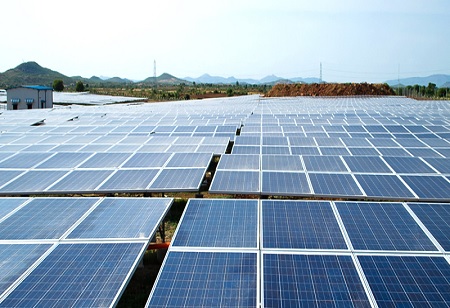
Sulzer Wins Key Contract for China's Major Solar Power Project

 Sulzer has been selected to provide hot and cold molten salts pumps for a substantial concentrated solar power (CSP) Tower initiative in China, marking a significant step towards renewable energy. This 100 MW facility is part of a larger program driven by rising global and Chinese demands for sustainable energy sources. Sulzer's specialized knowledge in this field has enabled the execution of multiple successful projects, ensuring continuous power supply from solar energy round the clock.
Sulzer has been selected to provide hot and cold molten salts pumps for a substantial concentrated solar power (CSP) Tower initiative in China, marking a significant step towards renewable energy. This 100 MW facility is part of a larger program driven by rising global and Chinese demands for sustainable energy sources. Sulzer's specialized knowledge in this field has enabled the execution of multiple successful projects, ensuring continuous power supply from solar energy round the clock.
Molten salts have been integral to the nuclear industry for nearly seven decades, with Sulzer playing a crucial role in designing and producing pumps for transferring high-temperature fluids within cooling systems. Over 15 years ago, Sulzer pioneered this technology for the solar sector, facilitating the storage of heat energy overnight.
The process involves pumping molten salt to solar collectors, where its temperature rises from approximately 300 °C to 600 °C. The heated salt is then stored in a tank and transferred to a heat exchanger, where the thermal energy generates steam to power a turbine/generator. This circuit acts as a thermal battery, allowing solar plants to deliver power continuously in optimal solar conditions.
Sulzer has a rich track record of supplying molten salt pumps to solar installations globally, including recent ventures in China. The 100 MW CSP Tower project represents the inaugural deployment of Sulzer pumps for both hot and cold circuits. Three cold molten salt pumps, equipped with 2.6 MW motors, will extend 18 meters below the base plate into the cold molten salt tank, complemented by two hot pumps. All pumps will be manufactured at Sulzer's Suzhou facility.
A notable challenge arose from the heightened operating pressure needed for the molten salt circuits. While smaller installations typically operate at approximately 50 bar, this project demanded a supply pressure of 100 bar. Each pump was individually tailored to meet this elevated pressure and slightly increased power demand. Critical elements like the throttle bushing and bush bearing design underwent thorough assessment, engineering, and testing before production began.
The end-user had multiple goals, such as procuring essential equipment from global brands, preferably made in China, at competitive prices. Sulzer successfully fulfilled these aims by completing bare-shaft pump engineering in Europe and engaging in joint manufacturing efforts in Belgium and China. Moreover, Sulzer provides a comprehensive support package through its local service center, enhancing efficiency in spare parts management for the end-user.

